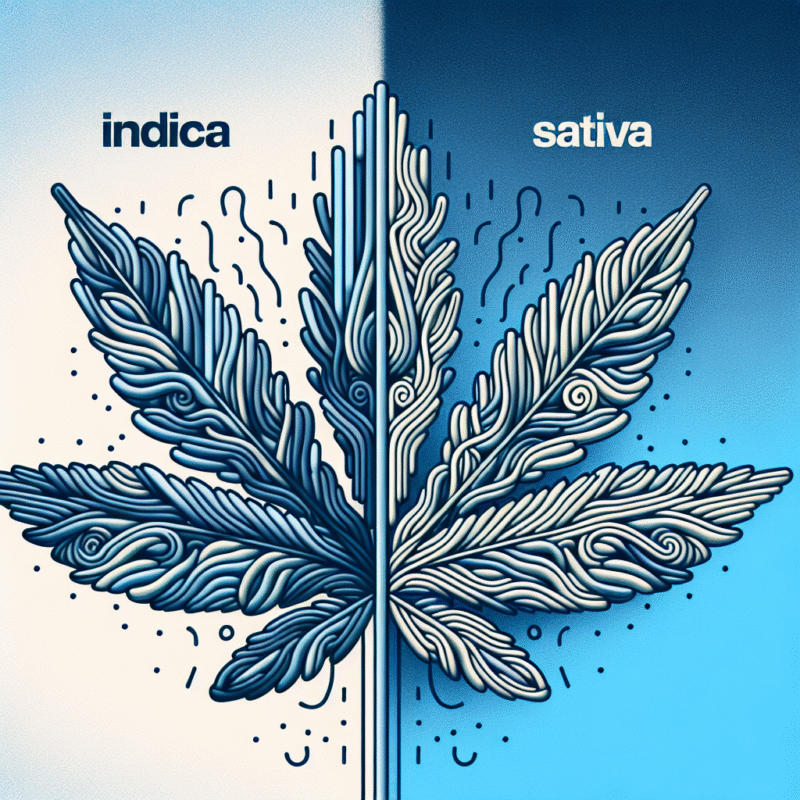Indica vs. Sativa: Tailoring Your Cannabis Experience
Cannabis has made a significant impact in recent years, particularly as more states and countries legalize its use for recreational and medicinal purposes. Among the myriad of choices available to consumers, two key categories stand out: Indica and Sativa. Understanding the differences between these two types can help users tailor their cannabis experience to meet their individual needs.
What Are Indica and Sativa?
Indica
Indica strains are typically associated with sedative effects. They originate from the Hindu Kush mountains, which span areas of Afghanistan and Pakistan. These strains tend to have broader leaves and shorter plants, with a growth pattern that favors bushiness over height.
Characteristics:
- Effects: Often lead to a sense of relaxation, making them suitable for evening use. Users commonly report feelings of tranquility, reduced anxiety, and drowsiness.
- Medicinal Benefits: Frequently recommended for pain relief, insomnia, and muscle spasms. Indicas can also help with anxiety and stress-related disorders.
- Common Strains: Popular Indica strains include Granddaddy Purple, Northern Lights, and Bubba Kush.
Sativa
Sativa strains come from regions closer to the equator, such as Southeast Asia and Central America. These plants are typically taller and have thinner leaves compared to Indicas.
Characteristics:
- Effects: Generally energizing and uplifting, Sativa strains can enhance creativity and focus, making them ideal for daytime use. Users often experience increased sociability and mental clarity.
- Medicinal Benefits: Commonly used to alleviate depression, fatigue, and attention deficit disorders. Sativas can also enhance mood and stimulate appetite.
- Common Strains: Well-known Sativa strains include Sour Diesel, Jack Herer, and Green Crack.
Hybrid Strains: The Best of Both Worlds
Hybrid strains are a blend of Indica and Sativa, designed to harness the unique qualities of both types. These strains can be tailored to provide specific effects based on the desired ratio of Indica to Sativa. For instance, a 70% Indica/30% Sativa hybrid might provide calming effects with a touch of euphoria.
Choosing the Right Strain for Your Needs
Factors to Consider
-
Intended Use: Are you looking for relaxation, pain relief, creativity, or socialization? Identify your primary reason for using cannabis to help narrow down your options.
-
Time of Day: If you’re using cannabis for daytime activities, a Sativa strain might be the better choice. For evening use or relaxation, an Indica strain could be more suitable.
-
Tolerance Levels: New users or those with low tolerance should start with lighter strains and gradually progress to stronger options as they become more comfortable.
- Testing and Lab Reports: Reputable dispensaries provide lab reports detailing cannabinoid content and terpenes. Understanding these can help you gauge the effects of different strains.
Terpenes: A Key Component
Beyond the Indica-Sativa dichotomy, terpenes—aromatic compounds found in cannabis—play a crucial role in the effects and experience. For instance, myrcene is known for its sedative properties, while limonene can elevate mood. Understanding terpenes can provide a deeper insight into how a strain might affect you, regardless of its classification.
Conclusion
The distinction between Indica and Sativa strains serves as a helpful starting point for cannabis users. However, individual preferences may vary widely. Experimentation, combined with an understanding of personal goals and tolerance levels, can lead to a tailored cannabis experience that is both enjoyable and beneficial. Whether you seek relaxation, creativity, or relief from pain, the world of cannabis offers an abundance of options to suit your needs.

